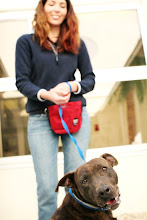Many dog parents are unsure of how to teach their dogs some manners. Unfortunately these folks sometimes resort to yelling, hitting, banishing or even giving up their dog. What these people desperately need is a lesson in obedience training. But where to turn? Now days it seems as if there is a doggy training business in every neighborhood. Plus there are your big chains and national corporations. How does one pick a system that will work for them and for their dog? Obedience training would be a breeze if we spoke K9 or dogs spoke human, but alas, it is not so. Dogs have their own attitudes, mindsets and body language; and they can be stubborn, dominant, submissive or fearful all of which can make them more of a challenge to train.
I recommend searching for an obedience instructor based on experience. In my career I have come across way to many individuals with little to no experience advertising themselves as dog trainers. (One woman actually put 24 years of dog ownership on her flyer as her one and only form of expertise.) Research their backgrounds. Do they have formal education and training? How much hands on experience do they have? How long have they been in the business? And do they have referrals?
Organized and structured classes are great, especially for young dogs, or dogs with out any specific problems or issues. This also allows you dog opportunities to socialize in a controlled environment. For dogs with more 'ingrained" problem behaviors or challenges, an in home instructor may be the way to go. Remember, no matter which course you choose the instructor/trainer should be teaching YOU to train your dog, not training the dogs themselves.
This is the only way the regimen will work and the outcome will remain a success.
To begin the training process, you will first need the correct tools: a simple nylon collar (fitted properly), a 4-6 foot nylon leash, training treats, a training pouch, patience, consistency and a sense of humor! Consistency is the number one rule in dog training, but close behind that is the idea that training should be fun! Include praise, treats, petting and play in every session. You and your dog should both look forward to your training time together.
Also, encourage all family members to participate to ensure that everyone is on the same page and that the dog is not receiving mixed signals. Don't forget to include the kids!
Most reputable trainers utilize a process called Positive Reinforcement. This means adding a valued stimulus to your dogs environment to help encourage a desired behavior to occur more frequently in the future. In other words, if your dog gets a treat (valued stimulus) every time they sit (desired behavior) they are more likely to sit again, in the hopes of receiving more treats! It's simple really; reward what you WANT your dog to do and ignore the rest!
It is important to remember that we NEVER yell or strike dogs during the training process. It is cruel and simply unnecessary. The goal is to have your dog love and respect you, not fear you; fear based training is antiquated and ineffective.
So, what SHOULD your dog know? Well, every dog seems to be expected to know how to: not jump, sit, lie down, stay, heel and come when called. This may shock you, but dogs are not born knowing how to do these things! We must show them.
How you ask? Stay tuned for my next installment for the answer to that and much more!





No comments:
Post a Comment